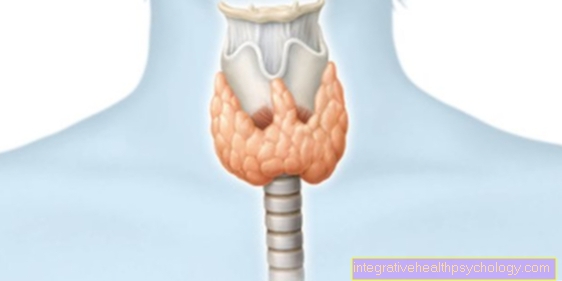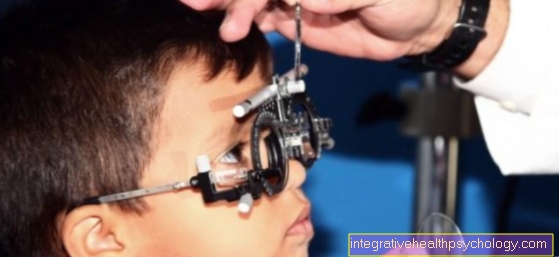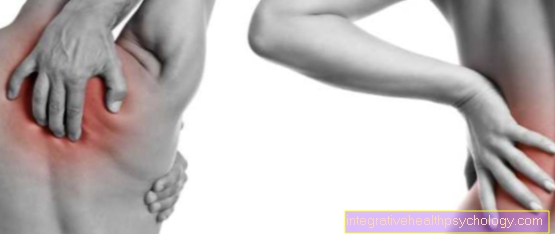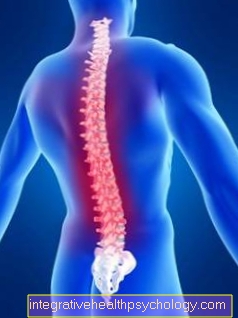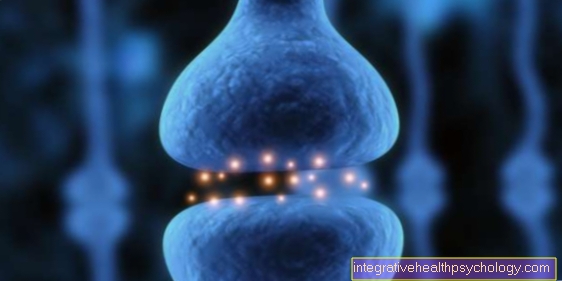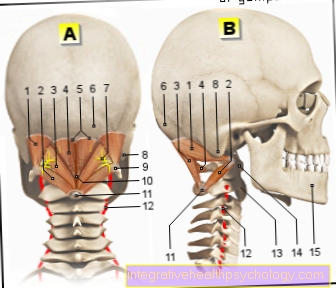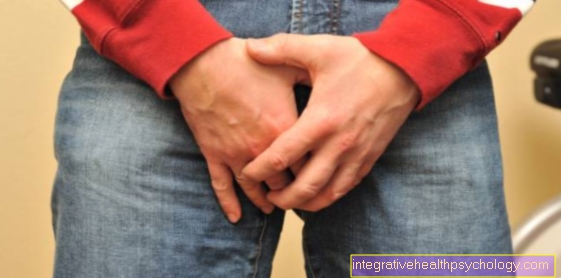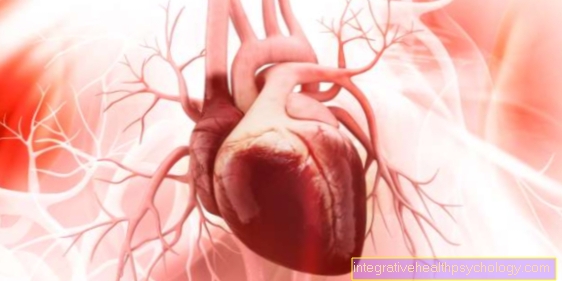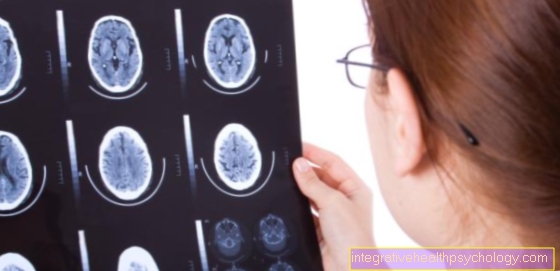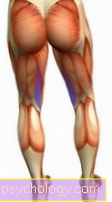Pseudoradicular pain
Definition - What is Pseudoradicular Pain?
Pseudoradicular pain is pain in the back that is not caused by irritation of the nerve root, but only pretends to be. Pseudoradicular pain is also known as referred pain. This means that the pain is perceived in a different place than at the actual place of origin. The most common explanatory model for this phenomenon is the principle of convergence, which states that the pain information from the various body regions converges ("converges") on common nerve cells in the spinal cord, and the brain can therefore no longer distinguish exactly where the pain is located. As a result, for example, pain in the lumbar spine is projected into the lower extremity and perceived as pseudoradicular pain in the leg.

How is pseudoradicular pain different from radicular pain?
Radicular pain is caused by compression of the nerve roots in the spinal cord (radix = root), whereas in pseudoradicular pain the nerve roots are not damaged. A typical cause of radicular pain is a herniated disc, in which part of the disc presses against the nerve root and causes symptoms such as paralysis and sensory disturbances. Pseudoradicular pain, on the other hand, is often triggered by muscular tension and joint pain.
Read more on this topic at: Pseudoradicular syndrome
causes
Pseudoradicular pain feels like radicular pain, but in contrast is not caused by damage to the nerve root. Muscle tension, signs of wear and tear on small vertebral joints and ligament problems in the lumbar spine and sacrum are often the cause of pseudoradicular pain.
If the sacroiliac joint has complaints (ISG blockade), the joint is blocked and can no longer be moved properly. The pain causes a relieving posture, which can also lead to muscle tension. Often the pain radiates as pseudoradicular pain in the thigh and the entire leg. Another cause of pseudoradicular pain can be irritation of the facet joint in the lumbar spine. Wear and tear on the vertebrae causes back pain that extends down into the leg. Periarthropathia coxae can also cause pseudoradicular pain. Wear and tear on the hip joint results in massive pain that pulls along the thigh down to the knee.
Read more on this topic at:
- Spinal disorders
- Vertebral blockage
- Causes of back pain
Accompanying symptoms in addition to the pain
In pseudoradicular pain, the pain from the joints and ligamentous structures of the spine is transmitted from the back, primarily to the extremities. The pseudoradicular pain is usually deep down in the lower back and radiates down the thigh to the level of the knee. Characteristically, the symptoms worsen after long periods of standing or walking. If the cause of the pain is in the upper body, the pain radiates along the chest and into the arm. Often the pain is then breath-dependent and worsens
The spinal nerve emerging from the spinal cord is not damaged in pseudoradicular pain, so patients usually have no problems with their motor skills. This means that the aching arm or leg shows no signs of paralysis or loss of strength. Sensory disorders are uncommon for pseudoradicular pain.
diagnosis
The doctor diagnoses pseudoradicular pain through the patient's medical history and a detailed physical exam. Imaging procedures such as x-rays, MRI or CT are only necessary if the diagnosis is not clear and serve to rule out other diseases such as piriformis syndrome, sacroiliac joint syndrome (SIJ blockade) or coxarthrosis. The doctor may also do neurological tests, such as electromyography (EMG) and nerve conduction velocity (NLG), to determine if there is any nerve damage. Pseudoradicular pain usually does not cause neurological deficits.
Read more on this topic at: Diagnosis of spinal disease
roentgen
Due to the high radiation exposure, the need for an X-ray examination for back pain or pseudoradicular pain is controversial. In the case of severe pain with suspected dysfunction of the spine or vertebral fractures, an x-ray of the back should definitely be taken.
MRI of the spine
In principle, magnetic resonance imaging (MRI) of the spine is not necessary for pseudoradicular pain. With the MRI examination, however, nerves and intervertebral discs can be assessed better than with conventional X-rays or CT. Therefore, an MRI scan is recommended to confirm the diagnosis and to rule out other causes of the pain.
Read more on this topic at: MRI of the spine
CT of the spine
A computed tomography (CT) examination can be used in addition to confirming the diagnosis for CT-targeted pain therapy for severe pseudoradicular pain. Local anesthetics are injected into the affected area (usually a vertebral joint) during the imaging process. The control by the CT enables the very precise application of the drug.
Treatment / therapy
Pseudoradicular pain can be well treated with nonsteroidal anti-inflammatory drugs (NSAIDs). These pain-relieving drugs include preparations with the active ingredients acetylsalicylic acid, diclofenac or ibuprofen, which can be obtained without a prescription in any pharmacy. Long-term use should, however, be discussed with a doctor.
Osteopathy offers good treatment options for pseudoradicular pain. The so-called spinal manipulation can mobilize the spine in a targeted manner and relieve back pain. An osteopath can unblock a painful sacroiliac joint with specific movements and thereby quickly relieve the pseudoradicular pain. The doctor can also prescribe physiotherapy, which uses targeted exercises to help the patient increase the range of motion of the spine and loosen the muscles in the pelvic and lumbar areas. Exercises to strengthen the abdominal and gluteal muscles also relieve the back and spine and can also be performed by the patient at home. These measures also help relieve pseudoradicular pain.
Read more on this topic at:
- Osteopathy
- Diclofenac
- physiotherapy
Duration
The duration of pseudoradicular pain varies greatly depending on the cause. The pain can last for several days to weeks or even for years. How quickly the healing process occurs and the pain subsides also depends on the treatment method chosen.
forecast
Treatment of the underlying condition results in rapid relief from pseudoradicular pain. By releasing the ISG blockade or treating the painful area with a local anesthetic, the patient will feel relief within a short time. The prognosis therefore depends largely on the cause of the pain. In general, the longer the pseudoradicular pain persists, the worse the prognosis.
Pseudoradicular syndrome
A pseudoradicular syndrome is pain that occurs in the back and radiates into the arms or legs. The pain has no neurological causes, i.e. the nerves are not damaged in pseudoradicular syndrome. The pain does not arise because the nerve root is damaged, but because it is indirectly irritated by muscular tension or joint problems. The symptoms are often caused by wear and tear on the small vertebral joints in the back. The treatment of pseudoradicular syndrome is carried out by an orthopedic surgeon and physiotherapy. In the case of persistent pain, the doctor can inject specific anesthetics into the affected joints and thereby relieve the pain.
Read more on this topic at: Pseudoradicular syndrome



